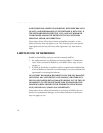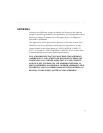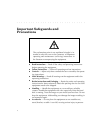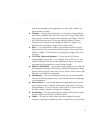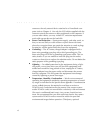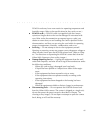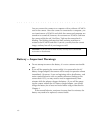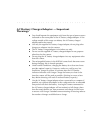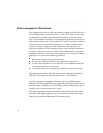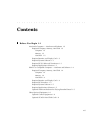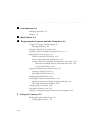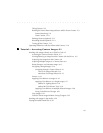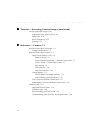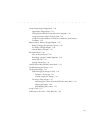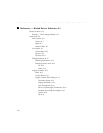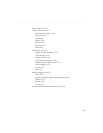
. . . . . . . . . . . . . . . . . . . . . . . . . . . . .
xvi
Electromagnetic Emissions
This equipment has been tested and found to comply with the limits for a
Class B digital device, pursuant to Part 15 of the FCC Rules. These limits
are designed to provide reasonable protection against harmful interfer-
ence in a residential installation. This equipment generates, uses and can
radiate radio energy and, if not installed and used in accordance with the
instructions, may cause harmful interference to radio communications.
However, there is no guarantee that interference will not occur in a
particular installation. If this equipment does cause harmful interference
to radio or television reception, which can be determined by turning the
equipment off and on, the user is encouraged to try to correct the interfer-
ence by one or more of the following measures:
Reorient or relocate the receiving antenna.
Increase the separation between the equipment and receiver.
Connect the equipment into an outlet on a circuit different from that
to which the receiver is connected.
Consult the dealer or an experienced radio/TV technician for help.
This equipment conforms with the requirements of European Standard
EN55022 with respect to radio interference for a Class B device.
Le présent appareil numérique n’émet pas de bruits radioélectriques
dépassant les limites applicables aux appareils numériques de la classe B
prescrites dans le réglement sur le broullage radioélectrique édicté par le
Ministère des Communications du Canada.
This digital apparatus does not exceed the class B limits for radio noise
emissions from digital apparatus set out in the radio interference regula-
tions of the Canadian Department of Communications.



